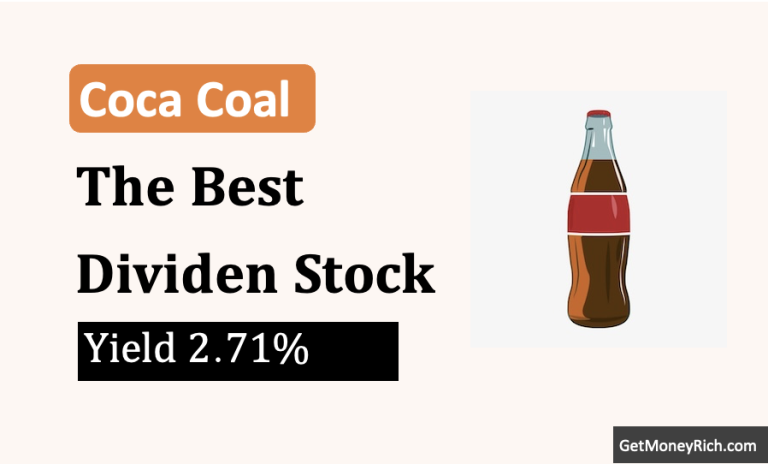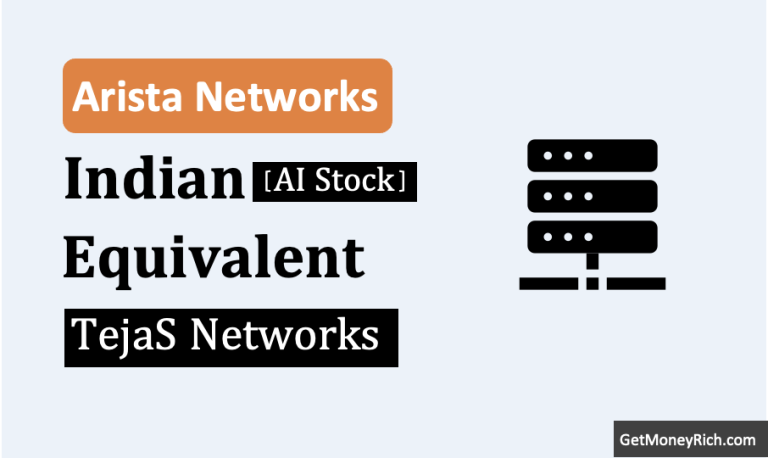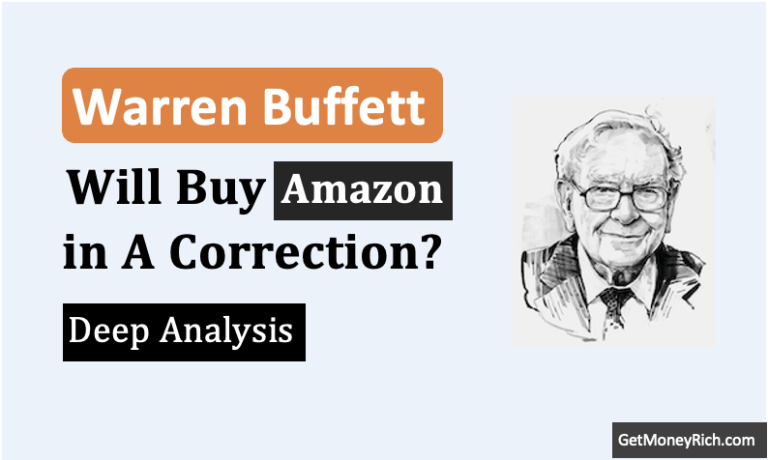I’m diving into something that might just draw you attention to a lesser know US stock. Ever heard of Nebius? No? Don’t worry. I’m here to break down why this small-cap US stock has the potential to grow fast in the coming years. Let’s get into the nitty-gritty of AI infrastructure and why Nebius could be the next big bet of the NASDAQ.
#1. What’s Nebius All About?
Nebius is not exactly a household name yet.
But in the background of all the AI buzz, Nebius is quietly building the infrastructure that makes it all possible. Think of them as the behind-the-scenes team providing the picks and shovels for the AI gold rush.
What does that mean?
Basically, Nebius offers super-powered computing, the kind you need to actually do serious AI stuff. Nebius does it because then the companies will have to build their own crazy expensive server farms.
We’re talking specialized cloud services, custom-built GPU setups, all geared toward letting businesses develop, train, and unleash their AI models.
Nebius is playing the long game, betting that AI will fundamentally change how everything works. The question is, can they carve out a lasting place in this wild new frontier?
That’s what we’re here to find out. In this article, I’ll not talk about the future of AI, instead, I’ll share with you the fundamentals of this company, Nebius.
But before that, a bit of introduction about the AI Infrastructure to give you perspective what Nebius is doing in the world of AI revolution.
#2. Why AI Infrastructure Matters
You might be asking, “Why should I care about AI infrastructure?”
Here’s an analogy: If AI is the car, then infrastructure is the road network.
Without good roads, even the best car can’t go anywhere fast. Nebius is laying down those roads. How?
- GPU Clusters: If regular computers are like bicycles, GPU clusters are like race cars. They use special processors (GPUs) to crunch huge amounts of data incredibly fast. This is essential for AI because AI models need to learn from tons of information. Normal computers would take forever to do it what GPUs can do in seconds.
- Cloud Platforms: Think of AI projects as cars on a long journey. Cloud platforms are like gas stations and repair shops along the way. They provide access to the computing power, storage, and other resources that AI projects need to keep running smoothly. Instead of building your own “gas station,” you just pay for what you use in the cloud.
- Developer Tools: Building an AI model is like navigating a complicated city. Developer tools are like the GPS, maps, and wrenches you need to find your way and fix any problems. They include software, libraries, and guides that help programmers create, test, and deploy AI applications more easily.
#3. The Growth Story of Nebius
Now, let’s talk growth. Why companies like Nebius and favourable future growth prospects? Here’s the deal:
- Early Mover Advantage: Nebius is not just another player; it’s one of the first to focus entirely on AI infrastructure. This means they’re setting standards, not just following them. Like Spotify was for music streaming, Nebius could be for AI infrastructure.
- Strategic Partnerships: They’ve got support from NVIDIA, a behemoth in the GPU world. It’s like having LeBron James on your basketball team. This partnership isn’t just for show; it means access to cutting-edge tech and credibility.
- Revenue Explosion: Nebius’s revenue has seen rapid growth. They’re projecting an annual run rate of $750 million to $1 billion by late 2025. That’s not just growth; that’s hypergrowth in an industry where demand is only increasing.
- Expansion Plans: They’re not just staying put. Nebius is expanding its data centers, particularly in the US, which is becoming a hub for AI innovation. This move is like opening new stores in a booming shopping district.
Let’s dive into a detailed fundamental analysis to uncover the strengths, weaknesses, and potential risks associated with this small-cap US stock. I’ll present you the report with a bias for AI and its related hype. I’ll present to you that data analysis as it appears to me on the paper.
#4. Fundamentals Analysis of Nebius’s Financial Reports
4.1: Profitability & Growth Analysis
The Income Statement tells a story of fluctuating growth and profitability for Nebius. While revenue has shown impressive growth in certain periods, the bottom line presents a more complex picture.
| Metric | TTM (12/31/2023) | 12/31/2022 | 12/31/2021 | 12/31/2020 |
|---|---|---|---|---|
| Revenue Growth (%) | 0.72% | 29.09% | 46.61% | N/A |
| Gross Profit Margin (%) | 55.06% | 54.98% | 55.30% | 60.73% |
| Operating Profit Margin (%) | 3.00% | 3.70% | 2.54% | 7.18% |
| Net Profit Margin (%) | -6.62% | 2.48% | 7.57% | 11.32% |
| Basic EPS | -2.83 | 0.61 | 1.44 | 1.01 |
- Revenue Growth: Nebius experienced significant revenue growth from 2020 to 2022, showcasing a high growth rate. However, the TTM data ending December 31, 2023, reveals a dramatic slowdown in revenue growth (only 0.72% YoY), indicating a potential issue with sales momentum. The initial growth years were promising, suggesting market adoption, but the latest slowdown needs careful scrutiny.
- Profit Margins: The Gross Profit Margin has remained relatively stable, hovering around 55%. It indicates efficient cost management related to direct production or service delivery. However, the Operating Profit Margin and Net Profit Margin tell a more concerning story. Both metrics have declined significantly since 2020. Most concerning, the Net Profit Margin slipped into negative territory in the latest TTM period.
What’s going on? Increased operating expenses (SG&A and R&D) as a percentage of revenue, combined with special charges and negative non-operating income, are likely contributing to the margin compression and net loss. High R&D expenses suggest the company is still heavily investing in future growth. As an investors, I’ll say that the expense controls are clearly a concern.
What’s Nebius’s Income Statement is Telling? Nebius is not yet consistently growing profits. While revenue growth existed previously, it’s stalled out in recent periods. The declining profit margins, culminating in a net loss, suggest rising costs are outpacing revenue increases. This trend needs immediate correction for Nebius to justify its growth-stock potential.
4.2: Financial Stability & Solvency
A strong balance sheet provides a cushion against market volatility and allows for strategic investments. Let’s assess Nebius’s financial health through key ratios:
| Metric | 12/31/2023 | 12/31/2022 | 12/31/2021 | 12/31/2020 |
|---|---|---|---|---|
| Debt-to-Equity | 0.70 | 0.33 | 0.55 | 0.33 |
| Interest Coverage | N/A | N/A | 21.71 | 16.42 |
| Current Ratio | 0.89 | 1.28 | 1.79 | 4.62 |
| Quick Ratio | 0.32 | 0.99 | 1.10 | 2.26 |
| Return on Equity (%) | -18.01% | 5.29% | 15.29% | 7.61% |
| Return on Assets (%) | -6.78% | 2.71% | 7.66% | 4.79% |
| ROCE (%) | N/A | N/A | 21.42% | 9.54% |
- Debt-to-Equity Ratio: The D/E ratio has risen substantially from 0.33 in 2022 to 0.70 in 2023. While still below the “danger zone” of 2.0, the increasing trend is a cause for concern. This trend is indicating that Nebius is using more debt to finance its operations or investments. This is important when considering that Net Income is in negative territory, so debt servicing will be difficult.
- Interest Coverage Ratio: Calculating the Interest Coverage Ratio is not possible for 2022-2023 as the values are negative. Looking at 2020-2021, the ratio looked healthy, and has a high ratio, indicating that Nebius could comfortably cover its interest expenses.
- Liquidity Ratios (Current & Quick Ratio): Nebius’s liquidity position has deteriorated significantly. The Current Ratio is at a troubling level, indicating that its current assets are not enough to cover short-term liabilities. The Quick Ratio, which excludes inventory, is alarmingly low. Nebius may face difficulties in meeting its immediate financial obligations.
- Return on Equity & Assets: ROE and ROA have plummeted into negative territory in the latest TTM, aligning with the net loss reported in the Income Statement. This indicates inefficient use of shareholder equity and total assets to generate profits.
What’s Nebius’s Balance Sheet is Telling? The Balance Sheet paints a worrying picture. While not critically over-leveraged yet, the increasing debt levels and declining liquidity ratios raise serious questions about Nebius’s short-term and long-term financial stability. The negative ROE and ROA underscore the company’s struggles in generating returns for its shareholders. A major restructuring of its liabilities might be needed to improve its outlook.
4.3: Cash Flow Statement Analysis
Accounting profits can be misleading. Let’s examine the Cash Flow Statement to understand the true cash-generating ability of Nebius:
| Metric | TTM (12/31/2023) | 12/31/2022 | 12/31/2021 | 12/31/2020 |
|---|---|---|---|---|
| Operating Cash Flow (OCF) | 794.06 | 559.57 | 124.62 | 438.20 |
| OCF Growth (%) | 41.90% | 348.98% | -71.56% | N/A |
| OCF to Net Profit Ratio | -1.32 | 2.27 | 0.23 | 1.32 |
| Free Cash Flow (FCF) | -374.78 | -137.77 | -473.75 | 108.23 |
| Capex as % of OCF | -147.19% | -124.62% | -479.66% | 75.23% |
- Operating Cash Flow: The trend in OCF is positive, showing growth in TTM. However, the OCF-to-Net Profit Ratio is negative in the most recent period, signaling very low quality of earnings.
- Free Cash Flow: This is a major red flag. Nebius has consistently generated negative Free Cash Flow (FCF) in all years except 2020. This suggests that the company is not generating enough cash from its operations to cover its capital expenditures, relying on external financing (debt or equity) to fund its investments.
- Capex: The negative Capex as a percentage of OCF just highlights that Net Income might be misleading.
What’s Nebius’s Cash Flow Report is Telling? The Cash Flow Statement reveals serious issues with Nebius’s cash-generating ability. The negative FCF, and negative OCF/Net Income is a major cause for concern. The company is burning through cash and relying on external funding to sustain its operations. This is unsustainable in the long run.
4.4: Valuation Analysis
4.4.1 P/E Ratio
Nebius has negative earnings (Net Loss) in its most recent TTM (Trailing Twelve Months). Therefore, calculating a P/E ratio is impossible. This is common for growth companies that are prioritizing investment over immediate profits.
Interpretation: A negative P/E doesn’t necessarily mean the company is a bad investment, but it does indicate that the stock price is not justified by current earnings. Instead the stock price is justified due to its growth potential.
4.4.2. Price-to-Book (P/B) Ratio
From the balance sheet, the Stockholder’s Equity as of 12/31/2023 is $3,347,373 (in thousands USD). Shares Issued, Ordinary Shares Number is around 361.482 million.
Book Value per Share = Total Stockholder’s Equity / Shares Outstanding = (3,347,373 * 1000) / 361,482,000 = $9.26 per share.
P/B Ratio = Market Price per Share / Book Value per Share = $44.49 / $9.26 = 4.80.
Interpretation: A P/B of 4.80 suggests that the market values Nebius at nearly five times its net asset value. A high P/B ratio may suggest investors have high expectations for future growth, or that the stock is potentially overvalued.
4.4.3. EV/EBITDA Ratio
From the financial data of Nebius, EBITDA = 1,024,597 in thousands USD. Market cap = $10.475B = $10,475,000 in thousands USD. Total debt = 2,356,050.16 in thousands USD (From balance sheet). Cash = 1,090,486.95 in thousands USD (From balance sheet)
EV = market cap + Total debt – Cash = $10,475,000 + $2,356,050.16 – $1,090,486.95 = $11,740,563.21 in thousands USD
EV/EBITDA = $11,740,563.21 / 1024597.56 = 11.46.
Interpretation: An EV/EBITDA of 11.46 is above average, may suggest that the stock is overvalued.
4. Rough Valuation Scenarios:
- Aggressive Growth Scenario: Assume Nebius can achieve and sustain 30% annual revenue growth over the next 5 years, and margins improve to 15% net profit. With the growth rate high, its fair value may be higher than the current stock price.
- Moderate Growth Scenario: Assume 15% annual revenue growth, with margins eventually reaching 10%.
Given the negative FCF and unstable profitability, a traditional Discounted Cash Flow (DCF) model is unreliable. However, in the AI industry, a DCF might not be helpful due to its future potential and the growth that will happen.
Summary Valuation Table
| Metric | Value | Interpretation (vs. AI Industry) |
| P/E Ratio | Negative | Not Meaningful at current situation |
| P/B Ratio | 4.80 | Relatively High. Might be a premium due to future expectations |
| EV/EBITDA | 11.46 | relatively average, may need further analysis |
Conclusion
Based on the available information, the valuation of Nebius is difficult to pin down with certainty due to its current lack of profitability.
The high price to book ratio (4.80) and the average EV/EBITDA of (11.46) indicate that investors have relatively average growth expectations.
However, we are also aware that we do not have enough information to accurately valuate this stock. Its current price is being supported by the growth projections, while its limited track record is a major concern.
Have a happy Investing.






